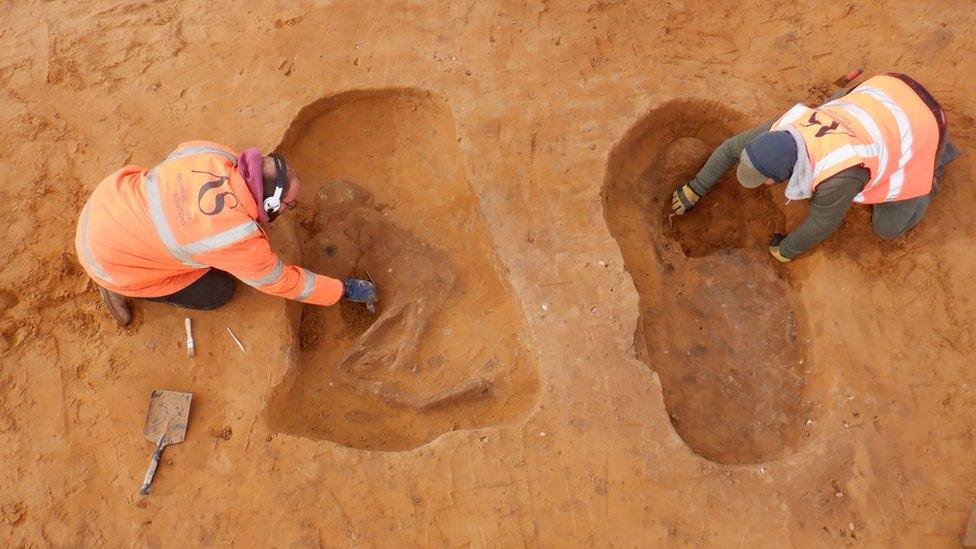Cambridge University study finds Anglo-Saxon kings were mostly vegetarian
- Published
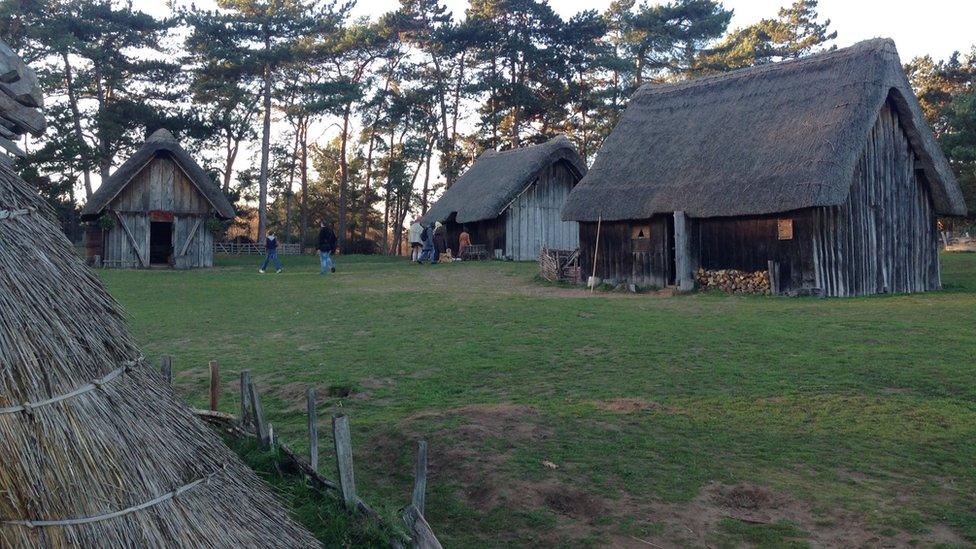
Anglo-Saxon royalty and nobles ate a similar diet to land-owning peasants, new research reveals
Anglo-Saxon kings were mostly vegetarian before the Vikings settled, according to new studies.
Cambridge University researchers analysed more than 2,000 skeletons, external and found elites ate no more meat than other social groups.
One study also suggested peasants occasionally hosted lavish meat feasts for their rulers.
Researchers said the findings overturned major assumptions about early medieval English history.
Cambridge University bioarchaeologist Sam Leggett drew her conclusions after analysing chemical signatures of diets preserved in the bones of 2,023 people buried in England from the 5th to 11th Centuries.
She then cross-referenced these with evidence for social status such as grave goods, body position and grave orientation and found no correlation between social status and high protein diets.
The findings surprised Cambridge University historian Tom Lambert, because so many medieval texts and historical studies suggested that Anglo-Saxon elites did eat large quantities of meat.

Researchers examined food lists like this one from the reign of King Ine of Wessex
The pair worked together to decipher royal food lists and discovered similar patterns of servings - like a modest amount of bread, a huge amount of meat, a decent but not excessive quantity of ale, and no mention of vegetables, although some probably were served.
Mr Lambert said: "The scale and proportions of these food lists strongly suggests that they were provisions for occasional grand feasts, and not general food supplies sustaining royal households on a daily basis."
Dr Leggett said: "I've found no evidence of people eating anything like this much animal protein on a regular basis.
"If they were, we would find isotopic evidence of excess protein and signs of diseases like gout from the bones. But we're just not finding that.
"The isotopic evidence suggests that diets in this period were much more similar across social groups than we've been led to believe.
"We should imagine a wide range of people livening up bread with small quantities of meat and cheese, or eating pottages of leeks and whole grains with a little meat thrown in."
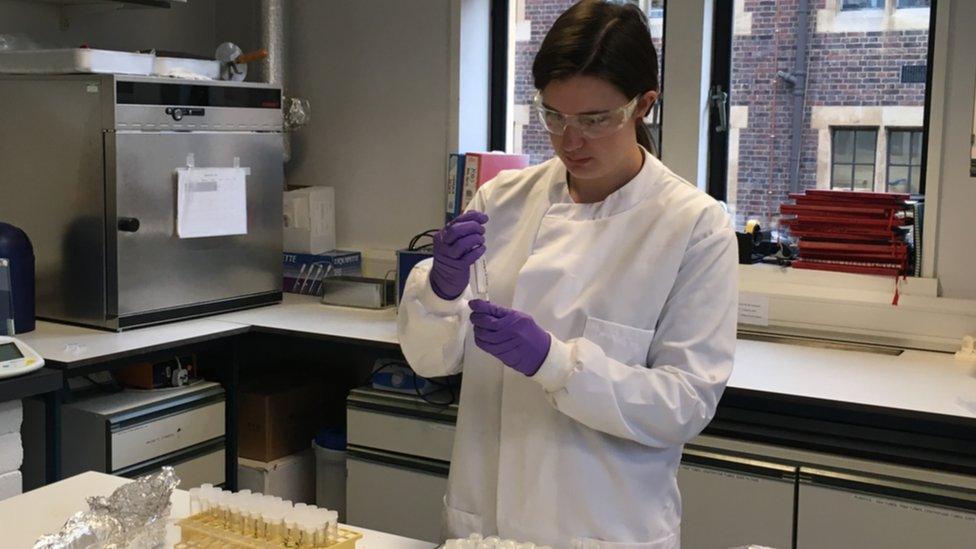
Sam Leggett analysed chemical signatures of diets preserved in the bones of more than 2000 skeletons
The researchers believe that even royals would have eaten a cereal-based diet and that these occasional feasts - examples of which have been excavated in East Anglia - would have been a treat for them too.
"Historians generally assume that medieval feasts were exclusively for elites," said Mr Lambert.
"But these food lists show that even if you allow for huge appetites, 300 or more people must have attended.
"That means that a lot of ordinary farmers must have been there, and this has big political implications."
He added: "We're looking at kings travelling to massive barbecues hosted by free peasants, people who owned their own farms and sometimes slaves to work on them.
"You could compare it to a modern presidential campaign dinner in the US. This was a crucial form of political engagement."

Find BBC News: East of England on Facebook, external, Instagram, external and Twitter, external. If you have a story suggestion email eastofenglandnews@bbc.co.uk, external
- Published18 April 2022

- Published24 February 2022
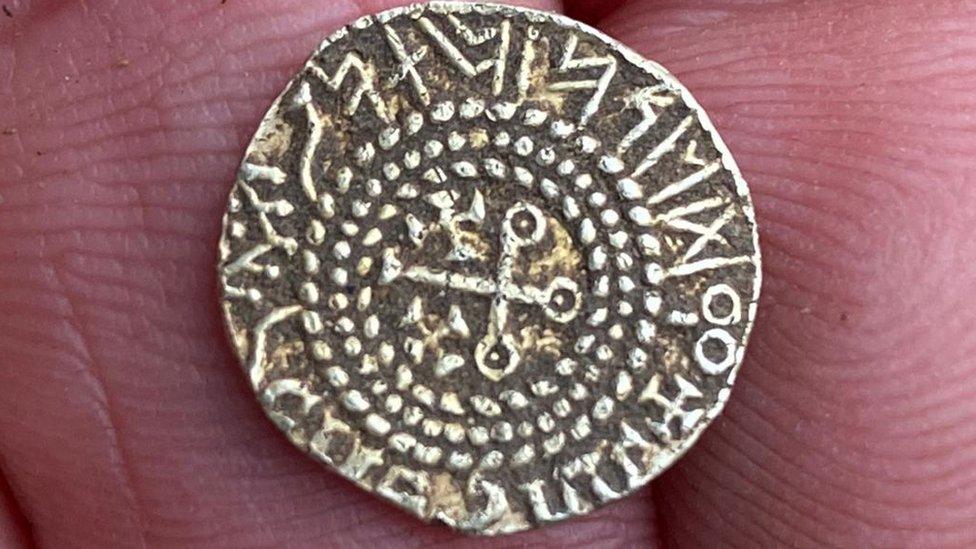
- Published28 December 2021
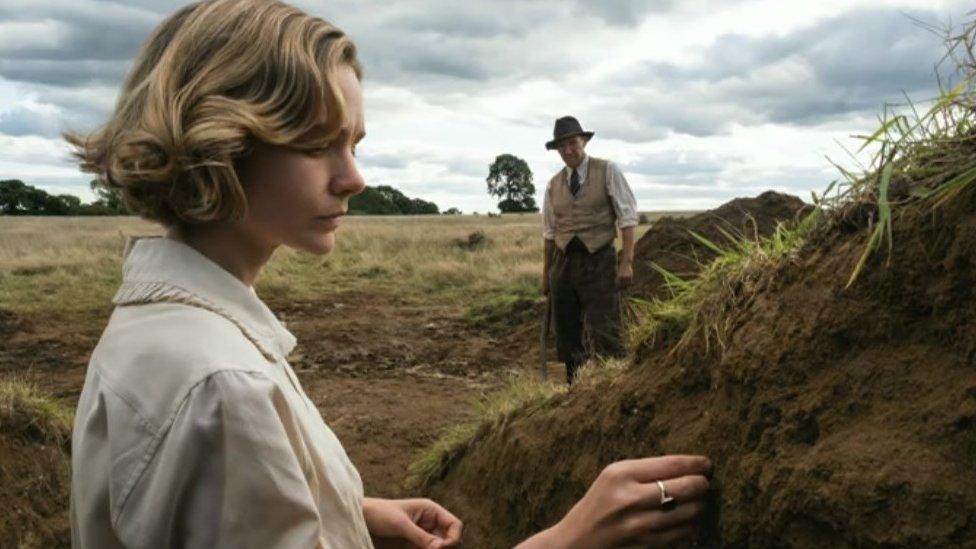
- Published16 September 2020
